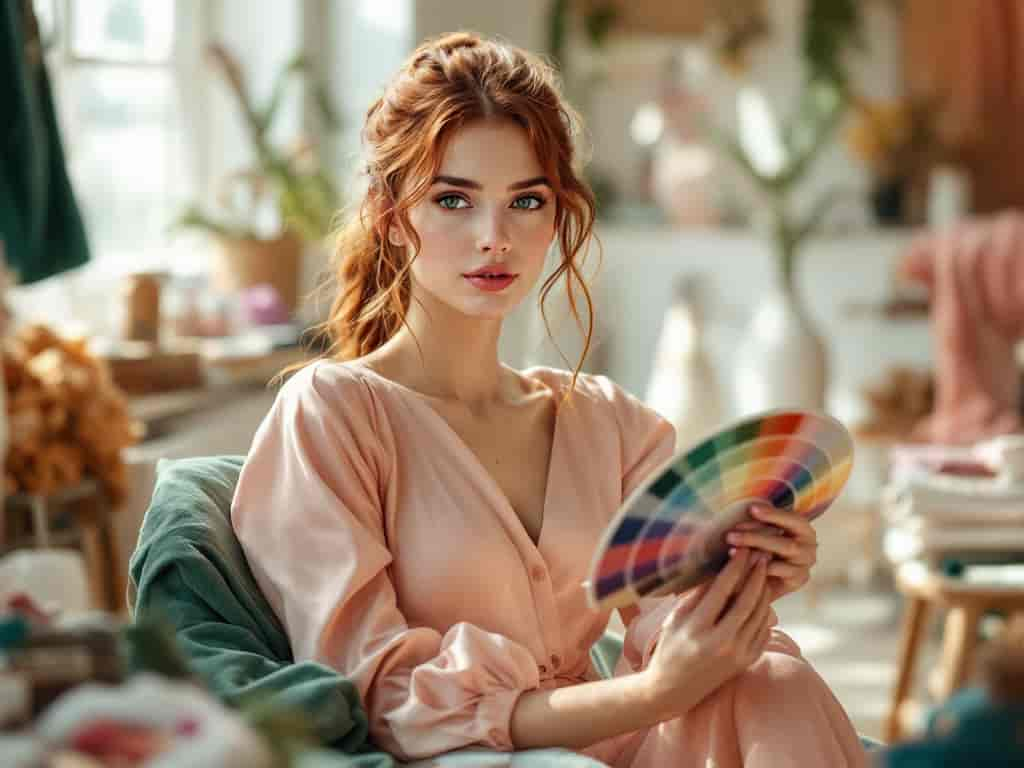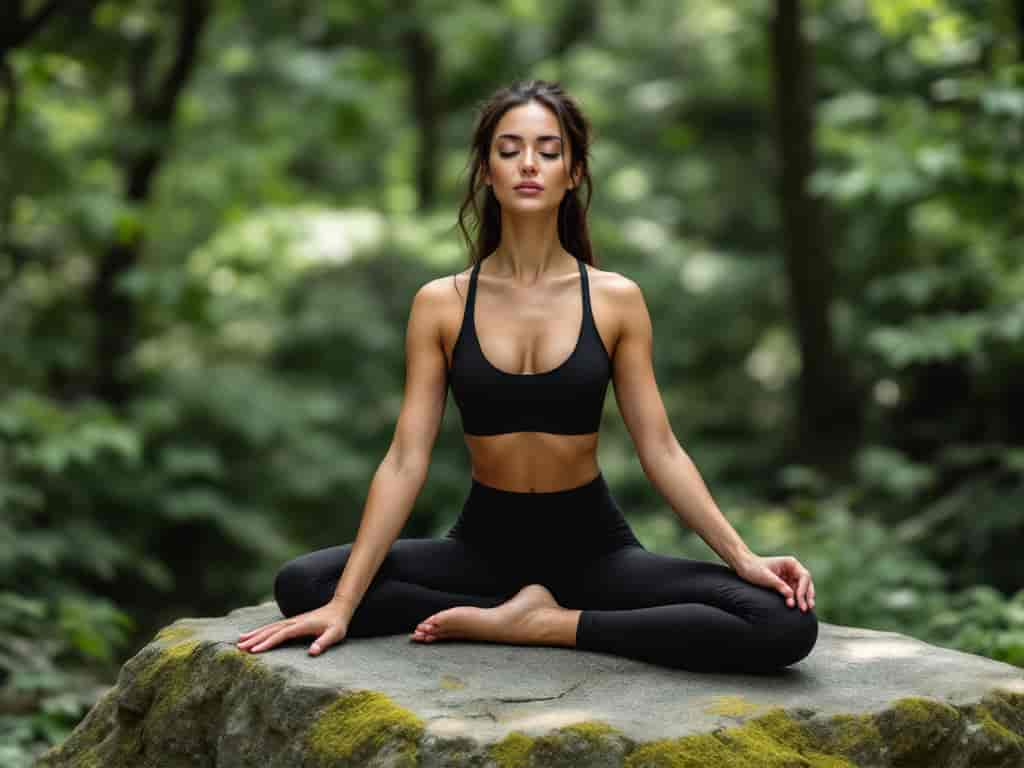Color Theory in Fashion: Choosing Your Perfect Palette
Ellie Moore

Photo: Color Theory in Fashion: Choosing Your Perfect Palette
Color Theory in Fashion: Choosing Your Perfect Palette
When it comes to fashion, the colors you wear can speak volumes. They convey emotions, set moods, and even influence how others perceive you. Understanding color theory in fashion is key to creating outfits that not only look aesthetically pleasing but also highlight your personal style. In this article, we’ll explore the basics of color theory, how to choose your perfect palette, and practical tips to apply these principles in your wardrobe.
What is Color Theory in Fashion?
Color theory in fashion refers to the principles and guidelines used to choose and combine colors in a visually appealing and harmonious way. Just as in painting or interior design, color theory helps designers and fashion enthusiasts select colors that complement each other, creating a balanced, attractive look.
Color theory is based on the color wheel, a circular diagram that organizes hues in a way that shows their relationships. By understanding these relationships, you can select colors that work well together and enhance your appearance.
Understanding the Color Wheel
The color wheel is divided into three primary categories: primary colors, secondary colors, and tertiary colors.
- Primary Colors: These are the building blocks of the color wheel. Red, blue, and yellow are the primary colors because they cannot be made by mixing other colors.
- Secondary Colors: These colors are created by mixing two primary colors. They include green (yellow + blue), orange (red + yellow), and purple (blue + red).
- Tertiary Colors: These are made by mixing a primary color with a secondary color. Examples include turquoise (blue + green) and magenta (red + purple).
Once you have a solid understanding of the color wheel, you can begin to experiment with color harmonies to create stylish and effective outfits.
The Basics of Color Harmonies
Color harmonies refer to combinations of colors that look aesthetically pleasing together. Here are the most popular color harmonies you can use when choosing your fashion palette:
1. Monochromatic Colors
Monochromatic outfits are made using variations of a single color. This approach uses different shades, tints, or tones of one hue to create a unified look.
Pro Tip: A monochromatic outfit can feel sleek and sophisticated. To add depth, mix textures or fabrics, such as pairing a satin shirt with leather pants, all in the same color family.
2. Analogous Colors
Analogous colors sit next to each other on the color wheel. They create a harmonious and natural look when paired together. For example, blue, blue-green, and green are analogous colors.
Pro Tip: For a subtle, yet dynamic outfit, choose analogous colors that are in the same family. A soft peach blouse paired with a coral skirt creates a calm and visually appealing outfit.
3. Complementary Colors
Complementary colors are opposite each other on the color wheel. When placed next to each other, they create a high contrast and vibrant look. For instance, red and green, or purple and yellow are complementary colors.
Pro Tip: Complementary color combinations can be bold and attention-grabbing. If you’re wearing a bright red top, consider pairing it with green accessories or shoes to make a statement.
4. Split-Complementary Colors
Split-complementary colors are a variation of the complementary color scheme. Instead of using the exact opposite color, you use the two colors adjacent to the complementary color. For example, if you choose blue as your base, the split-complementary colors would be yellow-orange and red-orange.
Pro Tip: This color harmony offers the vibrant contrast of complementary colors but with less intensity. It’s perfect for outfits that pop without overwhelming the eye.
5. Triadic Colors
Triadic colors are three colors that are evenly spaced around the color wheel. A common triadic combination is red, blue, and yellow.
Pro Tip: Triadic color schemes are ideal for creating a balanced look. Try pairing a yellow dress with a blue jacket and red accessories for a bold, but well-coordinated outfit.
How to Choose Your Perfect Color Palette
Choosing the right color palette for your wardrobe involves more than just understanding the theory behind color relationships. Your personal style, body type, skin tone, and even the occasion all play a role in selecting the colors that suit you best.
1. Consider Your Skin Tone
Your skin tone plays a huge role in determining which colors will look best on you. Broadly, skin tones can be divided into three categories:
- Cool Undertones: Skin with cool undertones often has hints of pink, red, or blue. People with cool undertones usually look great in colors like emerald green, navy, and cool shades of purple.
- Warm Undertones: Those with warm undertones have a yellow, peach, or golden hue to their skin. Warm undertones tend to look fantastic in earthy tones like red, orange, yellow, and brown.
- Neutral Undertones: If your skin has a mix of both warm and cool undertones, you’re considered neutral. This means you can wear a wide range of colors, from turquoise to soft pastels and rich jewel tones.
2. Think About Your Personal Style
What colors resonate with your personal aesthetic? If you lean towards a minimalist wardrobe, neutral shades like black, white, gray, and beige might be your go-to palette. For those who love bold fashion, you might enjoy experimenting with vibrant colors or even contrasting hues.
3. Consider the Occasion
The context in which you wear your outfit also matters. Bright, bold colors are perfect for casual outings or creative environments, while more neutral or subdued colors are often preferred for formal events, interviews, or business settings.
4. Use Color Psychology
Color psychology can also influence the way people perceive you. For instance:
- Red: Represents energy, power, and passion.
- Blue: Evokes calmness, trust, and professionalism.
- Yellow: Associated with happiness, optimism, and creativity.
- Green: Represents balance, nature, and tranquility.
- Black: Signifies elegance, sophistication, and mystery.
Using color psychology, you can choose colors that not only complement your appearance but also project the mood or image you want to convey.
Practical Tips for Incorporating Color Theory into Your Wardrobe
1. Start Small with Accessories
If you’re new to color theory, begin incorporating color into your outfits through accessories. A vibrant handbag, scarf, or pair of shoes can introduce new shades without overwhelming your entire look.
2. Balance Bright Colors with Neutrals
If you’re wearing a bright, eye-catching color, balance it out with neutral tones. For example, a neon pink top pairs beautifully with black pants or a beige skirt. This creates a striking yet harmonious outfit.
3. Use Color Blocking
Color blocking involves pairing blocks of solid, contrasting colors in one outfit. For instance, you might wear a red top with blue pants and yellow shoes. When done thoughtfully, color blocking can make a bold, fashionable statement.
4. Experiment with Patterns
Patterns like florals, stripes, and geometric designs often incorporate multiple colors. Pay attention to the dominant hues in patterns and choose solid-colored items that complement or contrast them.
Conclusion
Color theory in fashion is an essential tool for anyone looking to elevate their wardrobe. By understanding the relationships between colors and how they interact with your skin tone, style, and the occasion, you can create outfits that are both visually appealing and expressive of your personality. Whether you’re aiming for a sleek monochromatic look or a bold, complementary ensemble, the key to mastering color in fashion lies in experimentation and confidence.
Call-to-Action
What’s your favorite color combination for fashion? Share your thoughts in the comments below! And if you found this article helpful, don’t forget to share it with your friends or explore more color theory insights to further enhance your wardrobe.
FAQ
Q1: How do I know which colors look best on me?
A1: The best way to find your perfect palette is to experiment with different colors that align with your skin tone. Cool undertones typically look great in jewel tones, while warm undertones thrive in earthy shades. Try on different hues and notice which ones make your complexion glow.
Q2: Can I wear multiple bold colors at once?
A2: Yes, you can! However, the key is balance. Opt for a color harmony like complementary or triadic colors to create a well-coordinated look. You can also mix bold colors with neutrals to keep the outfit from feeling overwhelming.
Q3: Are there any colors that should be avoided for formal events?
A3: For formal events, it’s typically best to avoid overly bright or neon colors. Instead, opt for classic tones like navy, black, white, or deep jewel tones. These colors convey professionalism and sophistication while still offering elegance.
Finance & Investment
View All
November 14, 2025
What Is Finance and ManeuverMaster expert SEO content to build authority, boost rankings, and future-proof your strategy. Learn to create valuable, E-E-A-T-driven information.
Ellie Moore

January 20, 2025
Top Tools for Effective Competitive AnalysisExplore the best tools for competitive analysis and how they help businesses understand and outperform their competition.
Ellie Moore

October 8, 2025
Capital Premium Finance OverviewStand out online with expert SEO content. Discover how valuable, trustworthy content, guided by E-E-A-T, unlocks your digital potential.
Ellie Moore

October 24, 2025
Southeast Toyota Finance Contact InfoMaster expert SEO content to stand out online. Get your blueprint for creating authoritative, E-E-A-T-driven content that ranks & builds trust.
Ellie Moore

June 9, 2025
Empower Finance Helping You Take ControlMaster SEO with expert content! Build authority, earn trust, and drive organic traffic. Understand E-E-A-T to create high-ranking, valuable content that truly e...
Ellie Moore

June 1, 2025
AGCO Finance for FarmersGo beyond keywords! Discover how expert SEO content builds authority (E-E-A-T), drives traffic, and future-proofs your rankings. Essential guide.
Ellie Moore
Insurance
View AllLearn what umbrella insurance covers and who benefits from it. Secure your financial future with added protection.
Ellie Moore
Navigate insurance complexities. This guide helps policyholders, agents & risk managers find top-rated providers for optimal coverage, peace of mind & financial...
Ellie Moore
Navigate rising car insurance costs with Geico. This guide helps policyholders & risk managers secure optimal coverage & financial protection.
Ellie Moore
Before you travel, get the essential tips for choosing the perfect travel insurance policy for peace of mind.
Ellie Moore
Learn how critical illness insurance offers financial protection during health crises. Get covered and stay secure!
Ellie Moore
Strategic guide to Liberty Mutual insurance. Optimize coverage, mitigate risk, and boost financial efficiency for policyholders & risk managers.
Ellie Moore
Education
View AllSudbury schools embrace radical self-direction in learning. Learn how they empower students to take full control of their education journey.
Read MoreDiscover how flipped classrooms work and why they’re becoming popular. Learn the key benefits of this innovative teaching approach.
Read MoreHow does social media affect learning and behavior? Uncover the positive and negative effects of social platforms on students today.
Read MoreExplore the ongoing debate on standardized testing. Learn its pros, cons, and whether it should remain a key part of education.
Read MoreLearn how UNESCO promotes education for all globally. Explore key initiatives and efforts aimed at fostering equal learning opportunities for everyone.
Read MoreSocial skills training is key for kids with autism. Learn practical strategies to improve social interaction and communication in children with ASD.
Read MorePopular Post 🔥
View All
1
2
3
4
5
6
7
8
9
10
Health






Automotive
View All
August 7, 2025
Evans Automotive Offers Trusted Vehicle Solutions
Evans Automotive: Your trusted partner for comprehensive vehicle solutions. Experience transparent, expert care & peace of mind on the road.

February 7, 2025
Car Subscriptions: The Future of Vehicle Ownership
Explore the rise of car subscription services. Find out how they work, pros & cons, and why they’re becoming the latest trend in mobility.

September 4, 2025
Top Automotive Posters For Garage Decor
Revamp your garage! Discover how automotive posters transform your space into a personalized sanctuary, reflecting your passion for cars & speed.

August 20, 2025
Best Automotive Subwoofer Picks This Year
Transform your car audio! Discover the best automotive subwoofers for deep bass & immersive sound. Get expert picks & choose your ideal car subwoofer.

February 10, 2025
Retro Car Features We Miss and Want Back
From bench seats to hidden headlights, check out the retro car features we’d love to see return. Which nostalgic design is your favorite?

February 10, 2025
3D Printing in Auto Repairs: 5 Amazing Applications
Discover surprising ways 3D printing is transforming automotive repairs. Learn how this tech is speeding up fixes and cutting costs.

















